Da Nang is known as a food capital of central Vietnam. This city boasts many yummy dishes, prepared by distinctive recipes and some of them are famous all over the country. Someone says that its culinary culture is influenced by Cham people who learnt something from Indian and French who established it. Due to different weather and natural resources, Vietnamese people here also have their creativities to adapt. Of course, local ingredients (both plants and meats) as a part are to define the difference and specialness of Da Nang’s foods.
All tourists want to try local foods when they travel to Da Nang. In this article, we list all Da Nang’s food specialties and provide details. Their Vietnamese names are shown, to allow travelers easier to look for them and search places to try them. If you are a food explorer, let’s come to Con market. For those who care food safety, this place is not the choice, but only seeing, why not?
Read also:

Table of content
- 1 Bún Chả Cá (Fried Fish Cake Noodle Soup)
- 2 Mì Quảng (Noodles)
- 3 Bánh Tráng Cuốn Thịt Heo (Rice Papers and Boiled Pork)
- 4 Bún Mắm Nêm (Anchovy Sauce Noodle)
- 5 Gỏi Cá Nam Ô (Raw Fish Salad of Nam O Village)
- 6 Bánh Mì Que (Stick Bread)
- 7 Ốc Hút (Sucking Snails)
- 8 Chả Bò (Beef Patty)
- 9 Bánh Khô Mè (Dry Sesame Cake)
- 10 Bún Cá Ngừ (Tuna Noodle Soup)
- 11 Bánh Xèo (Rice Pancake)
- 12 Mít Trộn (Jackfruit Salad)
- 13 Mực Rim (Caramelized Squid)
- 14 Related Posts
- 15 Non Nuoc Beach: The Famous Beach of Da Nang
- 16 How to Get from Da Nang to My Son Sanctuary
- 17 Bach Ma National Park: Hiking, Trekking in Da Nang and Hoi An
- 18 Am Phu Cave Complete Travel Guide
- 19 Asia Park and Sun Wheel in Da Nang (Sun World Da Nang Wonders)
- 20 How to Get to Golden Bridge from Da Nang
- 21 Da Nang Food Specialties: What to Eat in Da Nang
- 22 How to Visit Golden Bridge Vietnam
- 23 Da Nang Shore Excursions: Guided Tours From Tien Sa Port
- 24 Han Market (Cho Han): Where to Shop in Da Nang?
- 25 Da Nang Cathedral (Da Nang Pink Church)
- 26 Things to Do in Ba Na Hills Besides Golden Bridge
- 27 Da Nang Half Day Tours
- 28 Da Nang Private Car and Driver
- 29 Da Nang and Hoi An Itinerary for Visitors Staying Overnight in Hoi An
- 30 Da Nang Things to Do: Guide to What to Do in Da Nang Vietnam
- 31 Da Nang Best Things to Do and Reasons
- 32 How to Get From Hoi An to Da Nang
- 33 Hoi An or Da Nang: Which is Better?
- 34 My Son Sanctuary Tour
- 35 Da Nang Best Area to Stay: Guide to Where to Stay in Da Nang
- 36 Da Nang Cave Tour: Best Underground Activities in Da Nang
- 37 Da Nang Best Time to Visit: Guide to Best Weather in Da Nang
- 38 Da Nang Weather by Month: Guide to Monthly Weather in Da Nang
- 39 What to Do in Da Nang At Night
- 40 Lang Co Vietnam Travel Guide
- 41 What to Do in Da Nang for 3 Days
- 42 My Khe Beach: A Complete Guide to Da Nang’s Best Beach
- 43 Da Nang Day Trips: Guide to Best Day Tours From Da Nang
- 44 Museums in Da Nang
- 45 Linh Ung Pagoda: Trio of Da Nang’s Holiest Mountain Temples
- 46 Da Nang Night Market: A Thing To Do in Da Nang at Night
- 47 Guide to Son Tra Mountain aka Monkey Mountain Vietnam
- 48 Ba Na Hills Tour
- 49 Da Nang Cable Car
- 50 How to Get from Da Nang Airport to Hoi An
- 51 Da Nang to Hoi An: Best Da Nang Airport Transfer and More
- 52 Hai Van Pass Da Nang: Map, Route, Weather, History, Tour
- 53 Da Nang Attractions Guide: What to See in Da Nang Vietnam?
- 54 Lady Buddha Da Nang: The Best of Monkey Mountain Vietnam
- 55 My Son Sanctuary Travel Guide
- 56 Da Nang Museum of Cham Sculpture
- 57 Dragon Bridge Da Nang: The Fire-Breathing Da Nang Bridge
- 58 Ba Na Hills Travel Guide: A First Timer’s Complete Guide
- 59 Golden Bridge Da Nang: A Guide to The Iconic Da Nang Bridge
- 60 Da Nang Bridge: A Guide to Famous Bridges in Da Nang
- 61 Ba Na Hills Cable Car: World Record, Cost, Reschedule, Map
- 62 Da Nang Mountain Temple: Marble Mountain’s Pagodas, More
- 63 Da Nang Caves: Underground World of the Marble Mountains
- 64 The Marble Mountains: Guide to Da Nang’s Iconic Mountain
- 65 Featured Tours and Experiences
- 65.0.1 Golden Bridge and Ba Na Hills Night Tour
- 65.0.2 Golden Hands Bridge Tour In Sunrise or Sunset (1/2 Day)
- 65.0.3 Cam Kim Island Bicycle Tour From Hoi An
- 65.0.4 Cham Island Tour From Hoi An (Group Tour)
- 65.0.5 Cham Island Tour From Da Nang (Group Tour)
- 65.0.6 Hoi An Vegetarian Food Tour
- 65.0.7 Hoi An Evening Walking Food Tour Through Laneways
- 65.0.8 Private Hoi An Basket Boat Tour (Shuttle Bus, Bicycle, Bike)
- 65.0.9 Half-day Am Phu Cave Tour (Private)
- 65.0.10 Hoi An Countryside Tour (Bicycle, Car, Electric Shuttle)
- 65.0.11 Da Nang Tour Package From Singapore
- 65.0.12 Hoi An Evening Tour From Da Nang with Lantern Boat Ride
- 65.0.13 Hoi An Walking Food Tour Through Laneways
- 65.0.14 My Son Sanctuary and Hoi An Old Town Tour with Thu Bon River Cruise
- 65.0.15 My Son Day Trip From Hoi An including Marble Mountains and Basket Boat
- 65.0.16 Half Day Hoi An City Tour With River Cruise
- 65.0.17 Son Tra Peninsula Tour with Marble Mountains (Private/Small Group)
- 65.0.18 Hue Day Trip From Hoi An with Hai Van Pass, River Cruise & Lunch
- 65.0.19 Hoi An Ancient Town and Countryside Tour (Bests of Hoi An Tour)
- 65.0.20 Hoi An Tour From Da Nang Airport (Private, Optional Lunch)
- 65.0.21 Hoi An Day Trip From Da Nang (Marble Mountains, Basket Boat, Old Town)
- 65.0.22 Da Nang City Tour From Airport (Private, Optional Lunch)
- 65.0.23 Hoi An City Tour with Lantern Class, Lantern Boat, Night Market & Local Food Sampling
- 65.0.24 Marble Mountains, Basket Boat Ride & Hoi An Old Town Walking Tour
- 65.0.25 Marble Mountains & Golden Bridge/Ba Na Hills Day Tour
- 65.0.26 Marble Mountains & Monkey Mountain Tour (Half-day, Private)
- 65.0.27 Private Golden Bridge Sunrise Tour (Half-day, Optional Lunch)
- 65.0.28 Hoi An Ancient Town & Golden Bridge Day Tour (Private/Small Group)
- 65.0.29 My Son Sanctuary & Golden Bridge/Ba Na Hills Day Tour
- 65.0.30 Private My Son Sanctuary Sunrise or Sunset Tour
- 65.0.31 Full Day Hoi An Ancient Town & Countryside Experience With Local
- 65.0.32 Full Day My Son Sanctuary & Hoi An Countryside Tour With Local
- 65.0.33 Full Day Hoi An Ancient Town & Coconut Village Experience
- 65.0.34 Son Tra Peninsula, Marble Mountains and Hoi An City Tour
- 65.0.35 Half-day Marble Mountains Tour from Da Nang or Hoi An
- 65.0.36 Da Nang Cave Tour (Half Day Underground Tour in Da Nang)
- 65.0.37 Hoi An Old Town & Lantern Making Class (Morning Tour, Half-day)
- 65.0.38 Full Day Bests of Da Nang & Hoi An Old Town Walking Tour
- 65.0.39 Full Day My Son Tour From Da Nang with Da Nang City Tour
- 65.0.40 My Son Sanctuary Tour From Hoi An or Da Nang With Local Guide
Bún Chả Cá (Fried Fish Cake Noodle Soup)
Bún chả cá is one of the best known Da Nang’s local foods. This noodle soup has broth, rice vermicelli, tomato, cabbage, pineapple, bamboo shoot, pumpkin and especially fried fish cake – its soul. The cakes are made of different kinds of fish. After bringing fresh fishes from the sea, people will remove the skin, bones and organs, and use the meat only. Then, they add spices, grind it and make small pieces of fish, before frying them in oil. When visiting Han market, it’s possible to see locals making fish cakes (near the door in Bach Dang St).
Lime, chilli, fish sauce and chilli sauce are used to personalize the flavour. locals add mam tom (shrimp paste) into the soup, to make it more bold. Chopped onion, carrot and garlic pickles are also on the table, and the diners just take if needed. Of course, the eateries serve raw herbs and vegetables, including bean sprouts, lettuce, basil, coriander, spring onion, fish leaf, etc.
At many places, people also serve chả cá hấp (steamed fish cake) and chả cá viên (fried fish balls), making the noodle soup richer and fuller.
Mì Quảng (Noodles)
Hoi An and Da Nang are in the same “Quảng region”, so Mi Quang is recognized to be a food specialty for both cities. This noodle dish has soft rice noodle sticks, not much broth, meat and some kinds of topping, such as crushed peanut, rice cracker. The sticks are white or yellow (from turmeric) and must be fresh. That’s why, noodle makers wake up in the dawn time to produce and drop them to food sellers later. In street vendors and small eateries, the broth and meats are in same pots. No doubt that the flavour of the broth is bold, little salty and 100% not vegetarian. We advise to be carefully to try if you are a vegetarian or vegan.
Popular meats for Mi Quang are pork, chicken, shrimp, snakehead fish and egg (specifically quail eggs). In Da Nang, Mi quang with frogs is strongly introduced, and this new kind of noodle is liked by many people. Frog’s meat tastes like chicken and is without skin but bones are still kept. Highly recommended to curious foodies!
Locals customize the taste of Mi Quang noodle by lime, red and green chillies, pepper and sauces. In addition, a basket of raw vegetables is also served, to make it more delicious. Veggies often are chopped lettuce, coriander, sliced banana tree, banana flowers, and herbs. Just put them into the bowl and mix.
Read also: The Best Mi Quang in Hoi An
Bánh Tráng Cuốn Thịt Heo (Rice Papers and Boiled Pork)
This dish is one of the most famous Da Nang’s local foods, not only in the city but also the whole country. It comprises four important ingredients: boiled pork, rice papers, anchovy sauce (mam nem) and raw vegetables. All make it a healthy and scrumptious food.
The pork itself is half-fat half-lean (locals belive that is most delicious) and thinly sliced after being boiled, to make people easily roll something later. Rice papers are produced in Dai Loc district, the best “workshop”. To ensure that you will eat correct “Dai Loc rice papers”, just remember: it’s thicker than others! To make them softer to roll, people dip them into fresh water. After that, people will place a pork slice and favourite raw vegetables on them and start to roll. A plate is provided, to keep the rolls clean when people do. Hands should be washed carefully before touching on ingredients.
Anchovy sauce is a must to complete and have full flavours (someone replaces this smelly sauce by fish sauce). Don’t forget to use lime, chili and sugar to reduce its strong taste. Veggies include cucumber, green mango, green banana, lettuce, coriander, spring onion, mints, basils, and seasonal herbs. They provide different flavours to people who eat: sweetness, sourness, acridness and special ones (from the herbs). Some places serve rice crackers (fried rice papers) or fried spring rolls to wrap as well.
Probably, travelers will see an authentic set of ingredients and real taste if going to local-style eateries. However, remember to be careful with the anchovy sauce. Stomachache is a common trouble non-local people may face.
Bún Mắm Nêm (Anchovy Sauce Noodle)
Bún mắm nêm is one of the signatures of Da Nang’s cuisine. It’s scrumptious for those who can eat but awful for haters due to strong smell of the anchovy sauce. Local anchovy sauce is famous all over the country, thanks to fishermen and their family in Nam O village (15 kilometers away from Da Nang downtown). Fish sauce (nước mắm) is another traditional product. Production of fish sauces there is registered as Vietnam’s national intangible cultural heritage.
In a bowl of bún mắm nêm, the diners will see rice vermicelli, boiled pork slices, grated papaya, boiled jackfruit, peanuts, fried shallots, raw vegetables, and herbs. Sometimes, people will add nem (fermented pork) and chả (pork patty) into it. All together are eaten with anchovy sauce (mắm nêm), one of the most delicious sauces to locals. Fresh chilli or chill sauce and kumquat are used to reduce the “strongness” of this special sauce.
Travelers can see bún mắm nêm at street vendors, market kiosks and eateries, from morning to evening. The price is around 1,5 US dollars.
Gỏi Cá Nam Ô (Raw Fish Salad of Nam O Village)
Gỏi cá or the raw fish salad is the signature food to Nam O fishing village, 15 kilometers northwest of Da Nang center. This is for “brave” foodie because it’s not only “scary” for tourists but also Vietnamese people.
The best fish used to make this specialty food is sardinella (ca trích in Vietnamese). Men in the village catch them in the sea and then bring home to eat. In the beginning, raw sardinella salad basically is in parties they have with friends and family members only. Later, because it’s delicious and special, many people open restaurants to sell, by the highway running through the village. Today, it’s possible to look for this famous dish in Da Nang center.
There are two styles of gỏi cá Nam Ô: dry and wet. In the dry option, locals fillet the sardinella into thin slices and soak them into a mixture of vinegar and lime juice to make rare fishes. After that, they’re pressed firmly by hands to remove the water. Thính (grilled rice powder) and spices are used to mix them, including chilli, ginger and roasting sesame. About the wet option, people do the same to have rare fishes. Instead of, they make a delicious sauce to eat with. It’s made of garlic, chilli, ginger, sugar, lime and fine fish sauce that is produced right in the village.
No matter which style, to eat, locals roll the fish with raw vegetables and dip into the sauce they like. Veggies are cucumber, green mango (or star fruit), green banana, Ming aralia (đinh lăng), etc. Rice wine (rượu gạo) or beer is never missed in any parties and meals.
Read also: Markets in Hoi An
Bánh Mì Que (Stick Bread)
Bánh mì que or the stick bread sometimes is thought to be firstly made in Da Nang. That’s why many people say “Da Nang stick bread” in other parts of the country. However, origin of this flavourful food can’t be affirmed now.
Compared to common banh mi sandwiches, bánh mì que is longer in length and smaller in width. People still fill it by pate, different meats and veggies, and use sauces to flavour. Meats can be pork or chicken, and veggies may be cucumber, pepper mint (rau răm) or coriander. Chà bông (pork floss) is also added. To have spice taste, travelers can request to have chill sauce (from the bottle) or chopped fresh chilli, just like locals.
One of the most famous places to serve bánh mì que in Da Nang is Banh Mi Ba Lan on Trung Nu Vuong St.
Ốc Hút (Sucking Snails)
Ốc hút or the sucking snails is one of the foods to remind about Da Nang’s local cuisines. To eat them, local people have to suck, making the name of the food. The snails, they are ốc gạo (assiminea lutea), a kind of freshwater molluck not strange to Vietnamese farmers. Although many other similar dishes are seen now around the city, these snails are still bests.
From the fields or markets, people have to soak snails into fresh water with lemongrass and chilli, to clean themselves. Mud and unclean things will be removed if they ar hungry and open their mouths. This stage can last up to a few days. When the snails are clean, people wash them again and then cook them with lemongrass, lemon leaf, chilli and other herbs.
The sucking snails are placed on a plate and topped with crispy fried shallots and sometimes coconut flesh. Local people will squeeze kumquats to make them more flavourful. Those who don’t like sucking, can use toothpicks to eat.
Chả Bò (Beef Patty)
Chả bò or beef patty or beef sausage is a favourite food for both locals and tourists. Local makers have to use extremely fresh beef to make it (they call “hot beef”). Their rule is taking the beef from butchered cows immediately and then washing. It’s chopped, pounded and grinded by hands traditionally (not by machine like in other cities). They aim to keep the qualities of the meat ingredient as much as possible. So, all works need to be done quickly and men often are chosen to do. Well-grinded beef later is shaped to like “a bottle” and wrapped by banana leaf. The whole thing will be steamed properly later. For that reason, Da Nang’s beef sausage is famous. Black pepper is also used to make this snack more tasty.
Locals like enjoying the beef party with beers, especially in the festivals. In daily meals, they also have some pieces to eat with steamed rice. Just to try, tourists can come to Han market.
Bánh Khô Mè (Dry Sesame Cake)
Bánh khô mè or the dry sesame cake is made of rice, glutinous rice, sesame, cane sugar, ginger and cinnamon. It’s produced in local families living in Cam Le district, south of the Da Nang airport. For locals, Ms Liễu (Bà Liễu) sells the most tasty cakes in the city.
To make bánh khô mè, local people use the powder mixed of rice and glutinous rice, with a proportion as secret of each workshop and then small squared pieces are mounded. The next step is steaming them in a few minutes. To have drier cakes, the artisans will grill them twice on hot charcoals. The first time aims to make them dry and the second time allows the cakes crispy. And of course, the proper cakes are not burnt.
Bánh khô mè also has a sweet caramelized sauce that is made of cane sugar and sesame. Spices like ginger and cinnamon are used a litte bit to flavour. Due to dry, crispy and sweet textures, locals enjoy this cake with hot green tea. There are many Vietnamese tourists buying it to bring home as gifts to family members (kids), friends, co-workers and relatives.
Bún Cá Ngừ (Tuna Noodle Soup)
Bun ca ngu, the tuna noodle soup is different from bun cha ca (fried fish cake noodle soup) by the main ingredient – the tuna. Small-size tunas are used, and local food makers will wash carefully and cut them into slices. They are marinated by fish sauce and spices, and then cooked with pineapple, tomato and bamboo shoot. Not only to make the broth rich, these veggies purposely are used to reduce fishy flavour. Called “bun ca ngu”, rice vermicelli (bun gao) is its main noodle.
Locals add lime juice, chilli or shrimp paste until they feel delicious. Then, they use chopsticks to take raw vegetables or pickled onions into the bowl and enjoy. Rice cracker (banh trang) and bread are not used in this noodle soup.
Bun cha ngu is sold in street stalls, markets and eateries you see along main streets. It’s available in places where bun cha ca (fried fish cake noodle soup) is on the menu.
Bánh Xèo (Rice Pancake)
Bánh xèo basically is the rice pancake. It’s sold in the noon onwards, so travelers can try it for lunch or dinner. Its name means “sizzling cake” in Vietnamese language because while people pour the rice milk into hot pans, the sizzling sound is emitted. The rice milk is made of fine rice (after being grinded well), fresh water and turmeric powder to make the cakes yellowish (colorful). So, the cake itself is totally vegetarian. In Da Nang, it’s thicker and more crispy than northern and southern styles. Somewhere, people fold or cut the cakes into 2 and somewhere, people serve the round one directly.
Traditionally, bánh xèo is known for fried rice cakes topped with pork, shrimp and bean sprouts. Over time, people have a twist. They use other meats and seafood, including chicken, squid, fish.
To eat bánh xèo, local people make a flavourful dipping source by fine fish sauce (if possible, produced in Nam O village), garlic, chilli, lime and cane sugar. They also prepare raw and fresh vegetables to roll the cakes with rice papers, including cucumber, green mango, green banana, herbs and whatever they like. These sauce and veggies make the diners taste better and can eat more. In Vietnamese traditional cuisine, this is a way to reach the balance between elements, giving a healthy meal.
Mít Trộn (Jackfruit Salad)
This tasty street food (snacks) has the main ingredients as boiled jackfruit and boiled pork rind. Both of them are sliced or chopped into small pieces to mix easier with herbs, fried shallots, chilli and sauces. Local people always enjoy the salad with crispy rice cracker (bánh tráng). They place it on the cracker and grab then.
In full moon days when many locals eat the vegetarian food, mít trộn is absolutely vegetarian (just no pork rinds).
Mực Rim (Caramelized Squid)
Fishmen in Da Nang catch a lot of seafood every fishing season. If they can’t sell to eat or produce nước mắm (fish sauce), they sun dry leftover seafood. Dried seafood is thought to be a kind of reserve food in local families, especially in rainy season (typhoon months). One of ways to make them tasty is cooking them with caramelized cane sugar, sauces and spices. Besides eating it alone, people also eat this sweety-salty snack with steamed rice or make mango salads. The most popular seafood are squid, small crab, fishes and shrimps.
If liking to try, let’s come to markets, including Son Tra night market by the Dragon bridge.
Related Posts
Non Nuoc Beach: The Famous Beach of Da Nang
Besides the Golden hands bridge – a global hit, Da Nang city also has beautiful beaches. If looking for somewhere great to stay and have a slow holiday, Non Nuoc
How to Get from Da Nang to My Son Sanctuary
Known as ‘the Angkor Wat of Vietnam’, My Son sanctuary boasts of its sophisticated temples dating back from 4th century. Sadly, in 14th century, it’s abandoned in the forests. Today,
Bach Ma National Park: Hiking, Trekking in Da Nang and Hoi An
Two best places for trekking and hiking in and near Da Nang are Son Tra mountain (peninsula) and Bach Ma national park. Which one is better is actually personal because these
Am Phu Cave Complete Travel Guide
Although in the Marble mountains – the most visited attraction in Da Nang, travelers often miss Am Phu cave. One of reasons is that it’s mentioned much online and not
Asia Park and Sun Wheel in Da Nang (Sun World Da Nang Wonders)
Have you ever seen the wheel of Da Nang? That is the Sun Wheel. It’s a part of greater Asia Park – an amusement park with a heap of fun
How to Get to Golden Bridge from Da Nang
The Golden Bridge (aka the Golden Hands Bridge) in Da Nang is a must visit attraction in Vietnam today. Many foreign travelers come to the city, just because they love
Da Nang Food Specialties: What to Eat in Da Nang
Da Nang is known as a food capital of central Vietnam. This city boasts many yummy dishes, prepared by distinctive recipes and some of them are famous all over the
How to Visit Golden Bridge Vietnam
The Golden Hand Bridge of Ba Na hills today is a dream place to visit for many travelers. Since it opened in June 2018, millions of people have set their
Da Nang Shore Excursions: Guided Tours From Tien Sa Port
Da Nang Vietnam today is one of stopovers for many cruises that travel from continent to continent, from country to country. It owns an ideal seaport to moor and it
Han Market (Cho Han): Where to Shop in Da Nang?
In the heart of Da Nang, the Han market is a popular place for visitors to buy something to bring home due to the diversity of merchandise. Back to history,
Da Nang Cathedral (Da Nang Pink Church)
Da Nang became a French protectorate on 3rd October 1888, under the name “Tourane”. By the Han river, the colonists designed a grid of streets with public buildings, a city hall,
Things to Do in Ba Na Hills Besides Golden Bridge
According to local authorities, 50% of visitors coming to Da Nang and Hoi An visit the Ba Na hills. In other words, that is nearly 10 millions of people. This
Da Nang Half Day Tours
In addition to day trips, travelers have many options of half-day tours in Da Nang to choose from. Not to spend a full day at different places, maybe far from
Da Nang Private Car and Driver
Your next holiday destination is Da Nang? You prefer to travel by yourself? Hiring a private car is one of the best options for you to explore with freedom, flexibility
Da Nang and Hoi An Itinerary for Visitors Staying Overnight in Hoi An
Da Nang and Hoi An are twin cities in the heart of Central Vietnam. Both are popular tourist destinations for either domestic or international visitors, and share many similarities. Due
Da Nang Things to Do: Guide to What to Do in Da Nang Vietnam
Unquestionably, Da Nang deserves a holiday trip from all types of traveller. Firstly, due to the weather. It has a longer sunny time than the north but less hot than
Da Nang Best Things to Do and Reasons
Da Nang is the largest tourist center in Central Vietnam. It owns fascinating natural and cultural places that attract both Vietnamese and foreigners. In the busiest year, this city of
How to Get From Hoi An to Da Nang
Da Nang is the neighbouring city of Hoi An. It's the capital of Central Vietnam and has the most important (busiest) transport hubs of the region, such as airport, train
Hoi An or Da Nang: Which is Better?
Da Nang and Hoi An are located in Central Vietnam, with a distance of roughly 30 km. To the north, Da Nang is the capital city of the region, with
My Son Sanctuary Tour
My Son Sanctuary is a Unesco world heritage site, attracting 450,000 visitors in recent years. It’s the best remains left by the fallen Champa Kingdom which ruled a part of
Da Nang Best Area to Stay: Guide to Where to Stay in Da Nang
In the Central coast, Da Nang has an area of 1,285 km2 and population of 1,134 people, making it become Vietnam’s 4th largest city. It plays an important role in the
Da Nang Cave Tour: Best Underground Activities in Da Nang
Different from Hue and Hoi An, Da Nang has limestone caves and grottoes. All of them are within the Marble Mountains (Ngu Hanh Son), a complex of 5 amazing hills
Da Nang Best Time to Visit: Guide to Best Weather in Da Nang
Da Nang is titled “Asia’s leading festival and event destination” by the World Travel Awards or Vietnam’s greenest city by the WWF. Its reputation comes from amazing natural mountain-to-sea sceneries,
Da Nang Weather by Month: Guide to Monthly Weather in Da Nang
In Central Vietnam, Da Nang has a tropical monsoon climate with two distinct seasons that each starts later than the North 2 months. Because of being shielded by the spectacular
What to Do in Da Nang At Night
Between the sunset and midnight, there are many things to do in Da Nang that travelers should know before getting to bed. Thankfully, different styles of traveling, budget or ages
Lang Co Vietnam Travel Guide
Lang Co was a lovely backwater town nestled at the foot of spectacular Hai Van Pass for some decades. Not yet widely known because of the popularity of beaches in
What to Do in Da Nang for 3 Days
Da Nang is a lovely coastal city in the middle of 3 Unesco world heritages Hue, Hoi An and My Son Sanctuary. This most worth-living municipality owns a poetic river
My Khe Beach: A Complete Guide to Da Nang’s Best Beach
Da Nang is a lovely seaside city with many beaches, and the best is My Khe. Located on the eastern coastline, it’s between little-known beaches near the foot of Son
Da Nang Day Trips: Guide to Best Day Tours From Da Nang
Centre and outskirts of Da Nang have incredible attractions where travellers need to spend many hours to get to and fully explore. There are the Ba Na Hills and Golden
Museums in Da Nang
Da Nang has many museums where visitors can see and learn a lot. Generally, their exhibitions have different themes, varying in stages of the history, groups of people (communities) having
Linh Ung Pagoda: Trio of Da Nang’s Holiest Mountain Temples
Linh Ung means “wishes answered miraculously” in Sino-Vietnamese. And it’s first used in 1841 to name a pagoda in the Marble Mountains by Thanh Thai, the 10th king of the
Da Nang Night Market: A Thing To Do in Da Nang at Night
Different from day markets in Da Nang, night markets are held open-air and on streets where traffic is active during sunny hours. A visit there provides the chance to understand
Guide to Son Tra Mountain aka Monkey Mountain Vietnam
From My Khe Beach or Han River promenades, tourists can see a part of the Son Tra Mountain. Although being near the city center, natural forests on its slopes have
Ba Na Hills Tour
Ba Na Hills is one of the best attractions in Da Nang, and the country. Its full name is the Ba Na-Suoi Mo Tourist Area, made from “Ba Na hill
Da Nang Cable Car
No surprise that now, when travelers make the plan to tour around Vietnam, there are many cable car rides recommended. Some are top things to do in its cities. The
How to Get from Da Nang Airport to Hoi An
Located in the city of the same name, Da Nang airport is the nearest airport to Hoi An. So, if travelers want to see an extremely-colorful Lantern festival or try
Da Nang to Hoi An: Best Da Nang Airport Transfer and More
If traveling to Hoi An by air, train and cruise ship, visitors will come to Da Nang first and then have a transfer. The largest city of Central Vietnam holds
Hai Van Pass Da Nang: Map, Route, Weather, History, Tour
Truong Son or Annamite Range is the most dramatic mountain ridge in Vietnam. When it juts out into the sea, spectacular Hai Van Pass is formed. This amazing sculpture of
Da Nang Attractions Guide: What to See in Da Nang Vietnam?
Da Nang is the capital city of the Central region, and one of the most attractive destinations to tourists in Vietnam. It’s established by French colonists and called by them
Lady Buddha Da Nang: The Best of Monkey Mountain Vietnam
From the East coast, visitors can see an enormous white statue with the mountain backdrop, that is the Lady Buddha Da Nang. Located in the ground of Linh Ung Pagoda,
My Son Sanctuary Travel Guide
My Son Sanctuary is a complex of Hindu temples and a Unesco world heritage site from 1999. It’s 40 km away from Hoi An and 70 km to the southwest
Da Nang Museum of Cham Sculpture
Da Nang Museum of Cham Sculpture is a highlight of the Han river waterfront. It’s established by French archaeologists to preserve intricate works of art of Champa kingdom, which ruled
Dragon Bridge Da Nang: The Fire-Breathing Da Nang Bridge
Praised to be the world's 30 most unique bridges recently, Dragon Bridge became the new icon for a Han river bridge in Da Nang. Spanning from the 100-years-old Cham Museum,
Ba Na Hills Travel Guide: A First Timer’s Complete Guide
50% of visitors to Da Nang plan to visit Ba Na Hills in their itinerary. It’s larger for first timers who may know about its inspirational Golden Bridge, world-record cable
Golden Bridge Da Nang: A Guide to The Iconic Da Nang Bridge
Recently-built but at the present time, the Golden Bridge Da Nang is one of the awaited attractions in Vietnam. On a slope of high foggy mountain, this delicate bridge and
Da Nang Bridge: A Guide to Famous Bridges in Da Nang
Da Nang has many bridges, and some of them are famous nationally and internationally. Before the recently-built Golden Bridge which made a boom in social media, people only knew bridges
Ba Na Hills Cable Car: World Record, Cost, Reschedule, Map
Cable car is one of the first ideas travelers think about Ba Na Hills, a Da Nang’s top attraction. It helps to shorten the time to get to the hills
Da Nang Mountain Temple: Marble Mountain’s Pagodas, More
Da Nang has many mountain temples where handmade architecture, natural sceneries and religious values are combined perfectly. So, travelers will see, enjoy and learn a lot about different things just
Da Nang Caves: Underground World of the Marble Mountains
One of the priceless gifts Mother nature gives to Da Nang is an array of caves and caverns. Almost all are located in the Marble Mountains, a complex of
The Marble Mountains: Guide to Da Nang’s Iconic Mountain
Had been an offshore group of islands, geological activities shifted the Marble Mountains to the land some thousands of years before. Today, its marble hills rise suddenly up to over 100














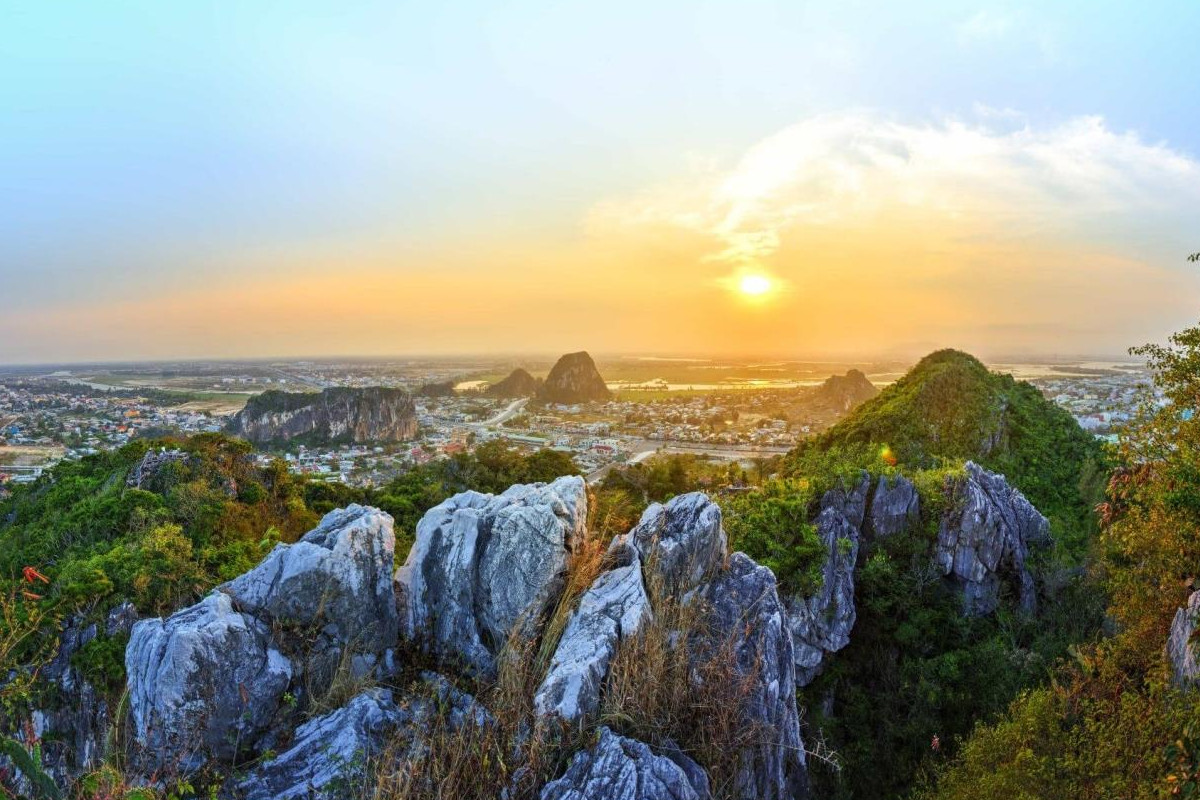




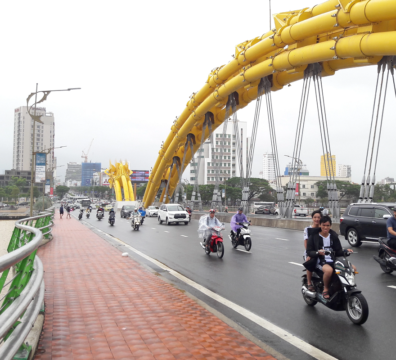











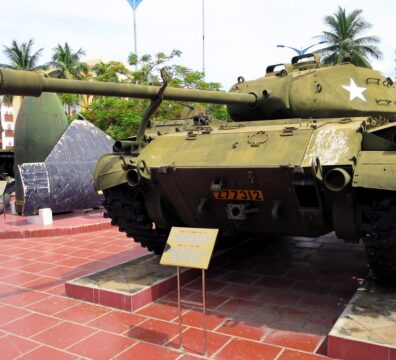

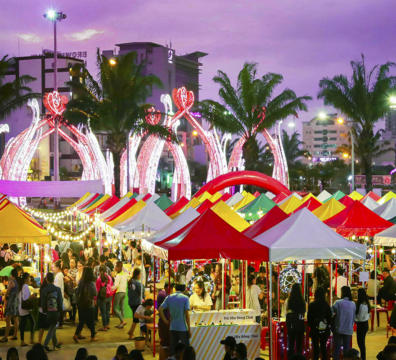
















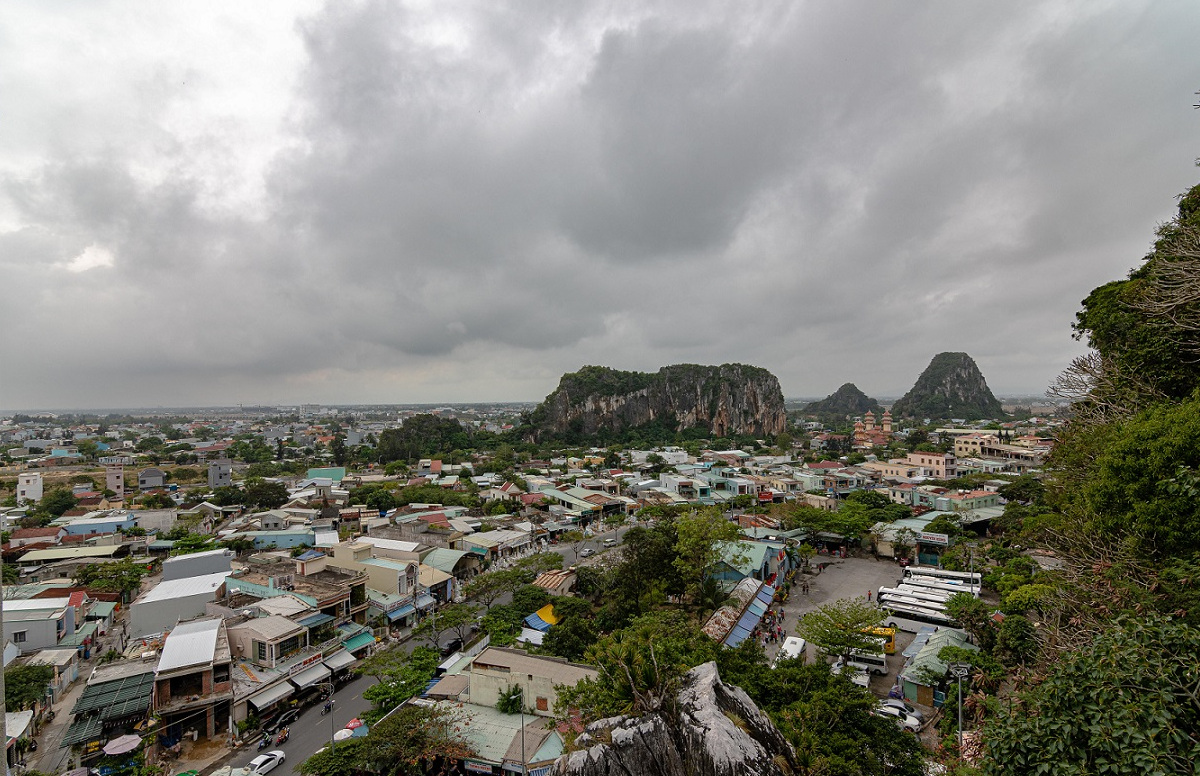



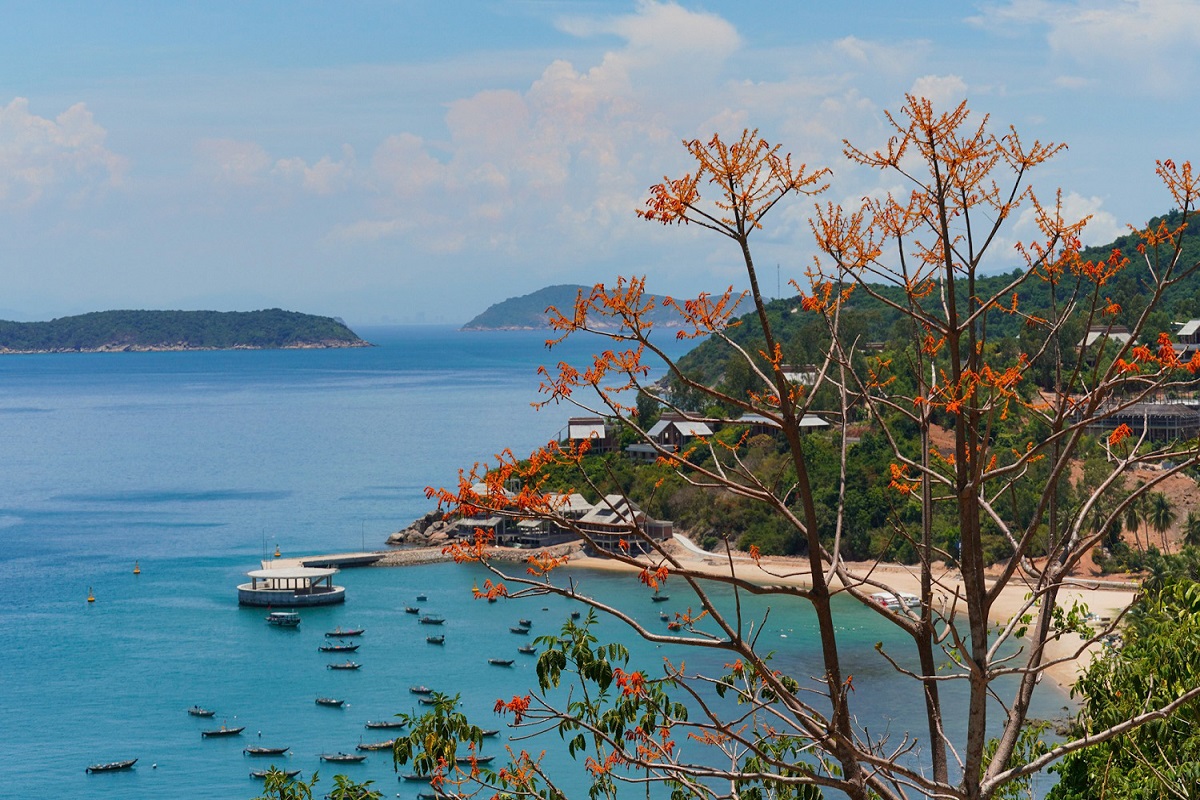






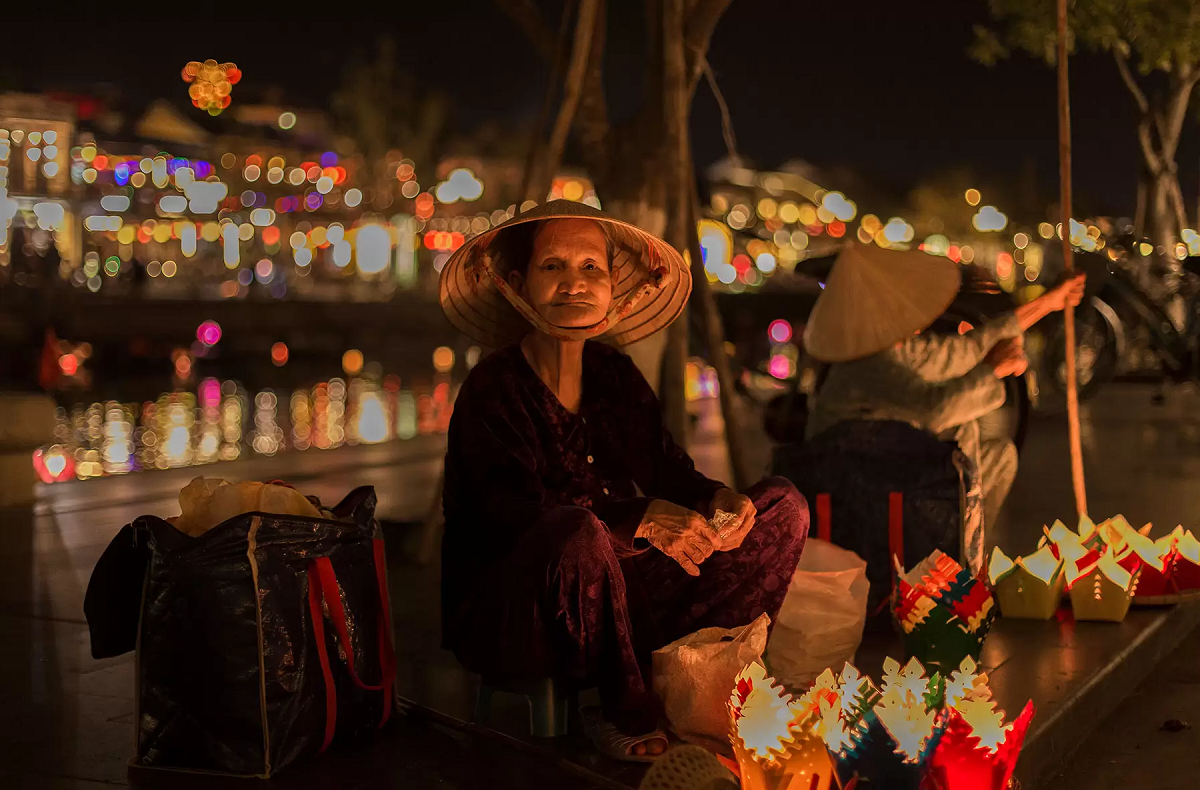

























Leave a Reply